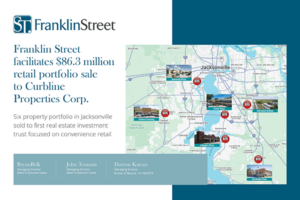Shopping is alive and well in Miami, say industry experts, with the majority of its malls and outdoor centers reaping the benefits.
The retail market is as strong as it’s been since the last peak around 2007, said Greg Matus, regional managing partner for Franklin Street Real Estate‘s South Florida office. He said rents are improving, a lot of tenants are expanding and taking more space and there’s a significant amount of capital in the marketplace – particularly coming from the Northeast and overseas – investing in and improving shopping centers.
“One of the most telling signs of the health in the Miami market is that Publix is buying a lot of their own shopping centers,” Mr. Matus said. In addition, he said, Publix is making a significant investment in redeveloping shopping centers it already owns.
He pointed to several purchases by Publix: Doral Isles Center, 10715 NW 58th St., and Briar Bay, 13005 SW 89th Place.
“Demand for retail is so high,” Mr. Matus said. “The population is exploding, which means more people are shopping.”
In addition to its healthy neighborhood shopping centers, Miami has some of the top-performing malls in the nation with Bal Harbour Shops in first place (selling $3,010 per square foot) and Aventura Mall (selling $1,500 per square foot) ranked sixth, according to Emran Ally, vice president for CBRE.
He said small shopping centers, the majority of which in Miami are unanchored with between two and 20 tenants, are doing well overall. Such centers that are well located, Mr. Ally said, have low vacancies and typically have tenants catering to basic needs.
The market for unenclosed shopping centers is strengthening and competitive, said Christopher Barney, vice president, tenant representation for CREC.
“There’s a large level of activity for good quality space and tenants often find themselves in a bidding war.” he said. “The majority of Miami-Dade County is more competitive than anywhere else in South Florida, with a lower supply compared with demand.”
For unanchored shopping centers, Mr. Matus said there’s not as much traffic as would be generated by a big-box store, so rents are lower and the tenants seem to be doing well.
“Five years ago, we wouldn’t have imagined seeing an urgent-care center in a shopping plaza but now every center has one,” he said.
As rents continue to rise, however, Mr. Matus said the “Mom and Pop” stores may get pushed out to the side streets.
Insurance and taxes are going up, said Jeff Cohen, senior vice president and head of the commercial division for Avatar Real Estate Services. “The ‘Mom and Pop’ tenants can’t afford the rents owners of the shopping centers need to support the properties,” he said. “Restaurants and retail that are ‘Mom and Pop’ on Lincoln Road are moving out to the side streets.”
To date, online shopping doesn’t seem to have harmed sales at malls or neighborhood centers, give the nature of what people buy in person.
“So far, the evidence is that online shopping has not affected the industry a great deal,” Mr. Ally said. There are customers for both malls and online suppliers, he said, with the neighborhood centers offering dry cleaners, shoe repair serves and takeout food – goods and services ones can’t purchase online.
“Online shopping is not affecting grocery stores,” said Mr. Matus. He added that retailers are making themselves as strong online as in standing retail stores and getting creative by building smaller stores that carry only what people will buy in person.
How things will evolve, however, is a growing concern for retailers.
Statistics are saying that online shopping trends are up 15%-20%, said Mr. Barney, “Retailers [such as Target] are looking for smaller footprints with less merchandise and staff on location while building up their online presence.”
It’s an evolving business model, Mr. Barney said, with retailers asking themselves how to be more efficient and maintain a presence in the market.
“Landlords are helping by becoming more creative with space,” he said. “Some are knocking out space to accommodate smaller anchors, junior boxes” – national tenants who need 10,000 to 20,000 square feet.



